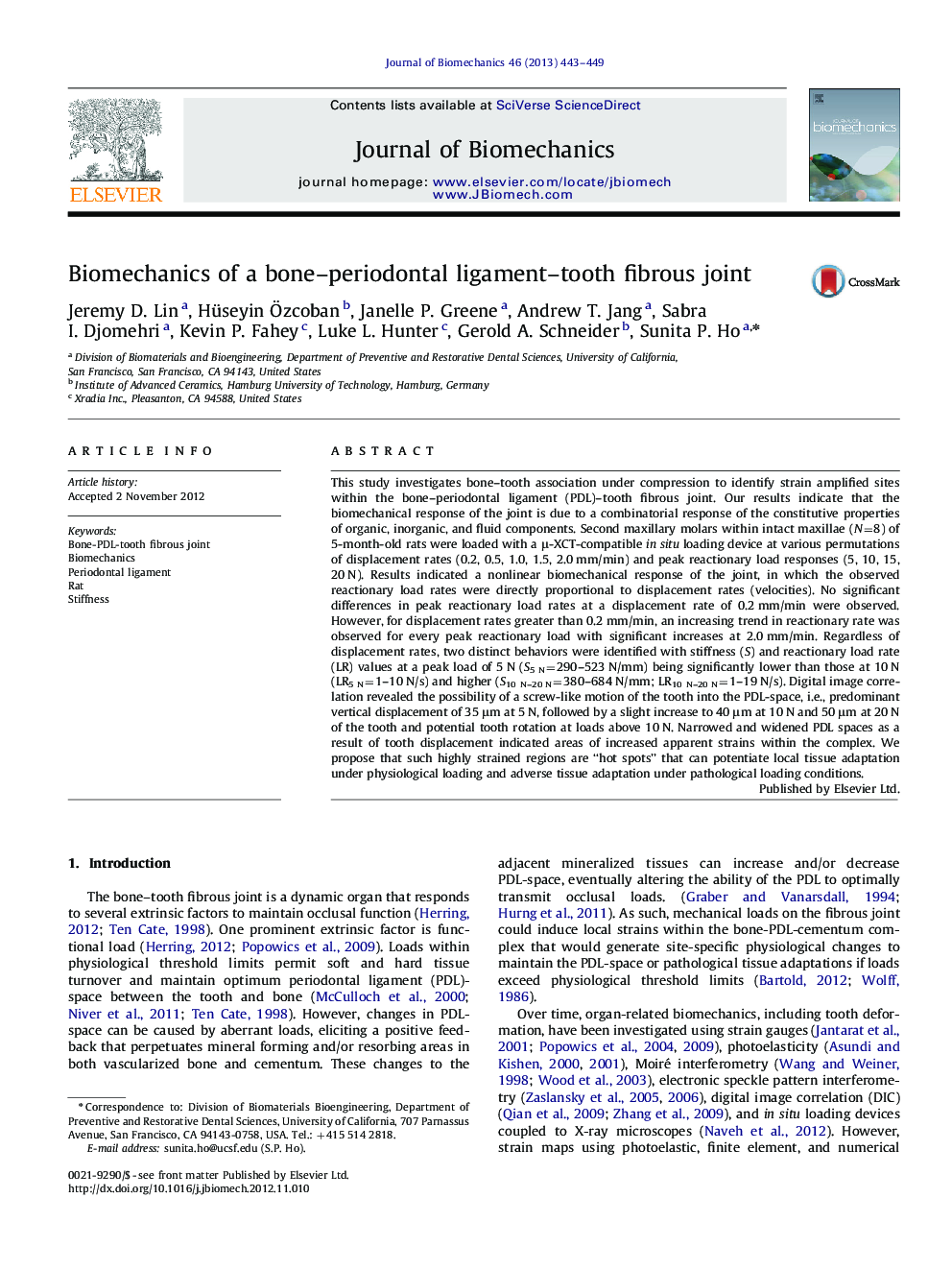| کد مقاله | کد نشریه | سال انتشار | مقاله انگلیسی | نسخه تمام متن |
|---|---|---|---|---|
| 10431952 | 910232 | 2013 | 7 صفحه PDF | دانلود رایگان |
عنوان انگلیسی مقاله ISI
Biomechanics of a bone-periodontal ligament-tooth fibrous joint
ترجمه فارسی عنوان
بیومکانیک فیبرهای مفصلی رباط دندان پریودنتال
دانلود مقاله + سفارش ترجمه
دانلود مقاله ISI انگلیسی
رایگان برای ایرانیان
کلمات کلیدی
موضوعات مرتبط
مهندسی و علوم پایه
سایر رشته های مهندسی
مهندسی پزشکی
چکیده انگلیسی
This study investigates bone-tooth association under compression to identify strain amplified sites within the bone-periodontal ligament (PDL)-tooth fibrous joint. Our results indicate that the biomechanical response of the joint is due to a combinatorial response of the constitutive properties of organic, inorganic, and fluid components. Second maxillary molars within intact maxillae (N=8) of 5-month-old rats were loaded with a μ-XCT-compatible in situ loading device at various permutations of displacement rates (0.2, 0.5, 1.0, 1.5, 2.0 mm/min) and peak reactionary load responses (5, 10, 15, 20 N). Results indicated a nonlinear biomechanical response of the joint, in which the observed reactionary load rates were directly proportional to displacement rates (velocities). No significant differences in peak reactionary load rates at a displacement rate of 0.2 mm/min were observed. However, for displacement rates greater than 0.2 mm/min, an increasing trend in reactionary rate was observed for every peak reactionary load with significant increases at 2.0 mm/min. Regardless of displacement rates, two distinct behaviors were identified with stiffness (S) and reactionary load rate (LR) values at a peak load of 5 N (S5 N=290-523 N/mm) being significantly lower than those at 10 N (LR5 N=1-10 N/s) and higher (S10N-20 N=380-684 N/mm; LR10N-20 N=1-19 N/s). Digital image correlation revealed the possibility of a screw-like motion of the tooth into the PDL-space, i.e., predominant vertical displacement of 35 μm at 5 N, followed by a slight increase to 40 μm at 10 N and 50 μm at 20 N of the tooth and potential tooth rotation at loads above 10 N. Narrowed and widened PDL spaces as a result of tooth displacement indicated areas of increased apparent strains within the complex. We propose that such highly strained regions are “hot spots” that can potentiate local tissue adaptation under physiological loading and adverse tissue adaptation under pathological loading conditions.
ناشر
Database: Elsevier - ScienceDirect (ساینس دایرکت)
Journal: Journal of Biomechanics - Volume 46, Issue 3, 1 February 2013, Pages 443-449
Journal: Journal of Biomechanics - Volume 46, Issue 3, 1 February 2013, Pages 443-449
نویسندگان
Jeremy D. Lin, Hüseyin Ãzcoban, Janelle P. Greene, Andrew T. Jang, Sabra I. Djomehri, Kevin P. Fahey, Luke L. Hunter, Gerold A. Schneider, Sunita P. Ho,
